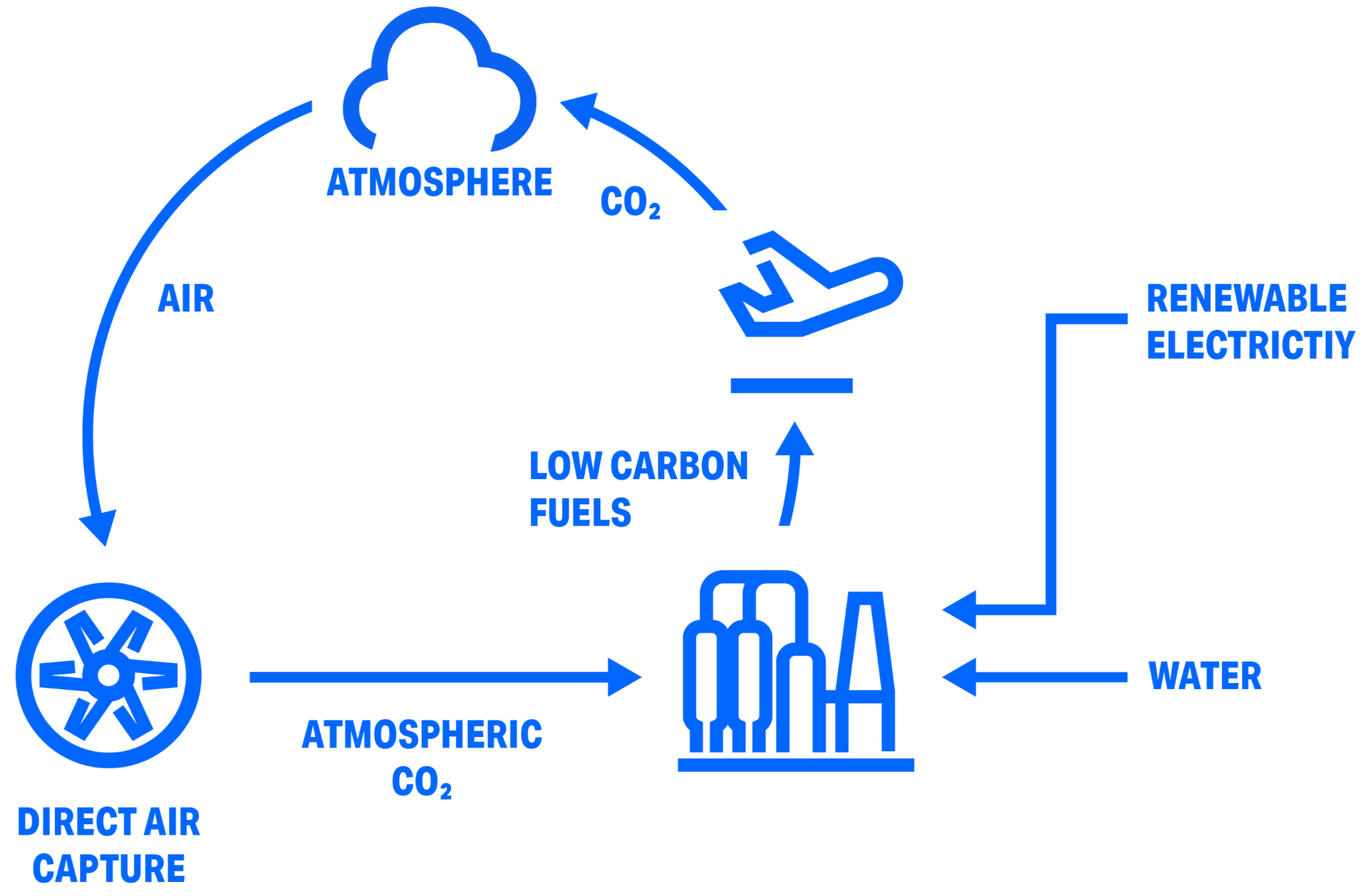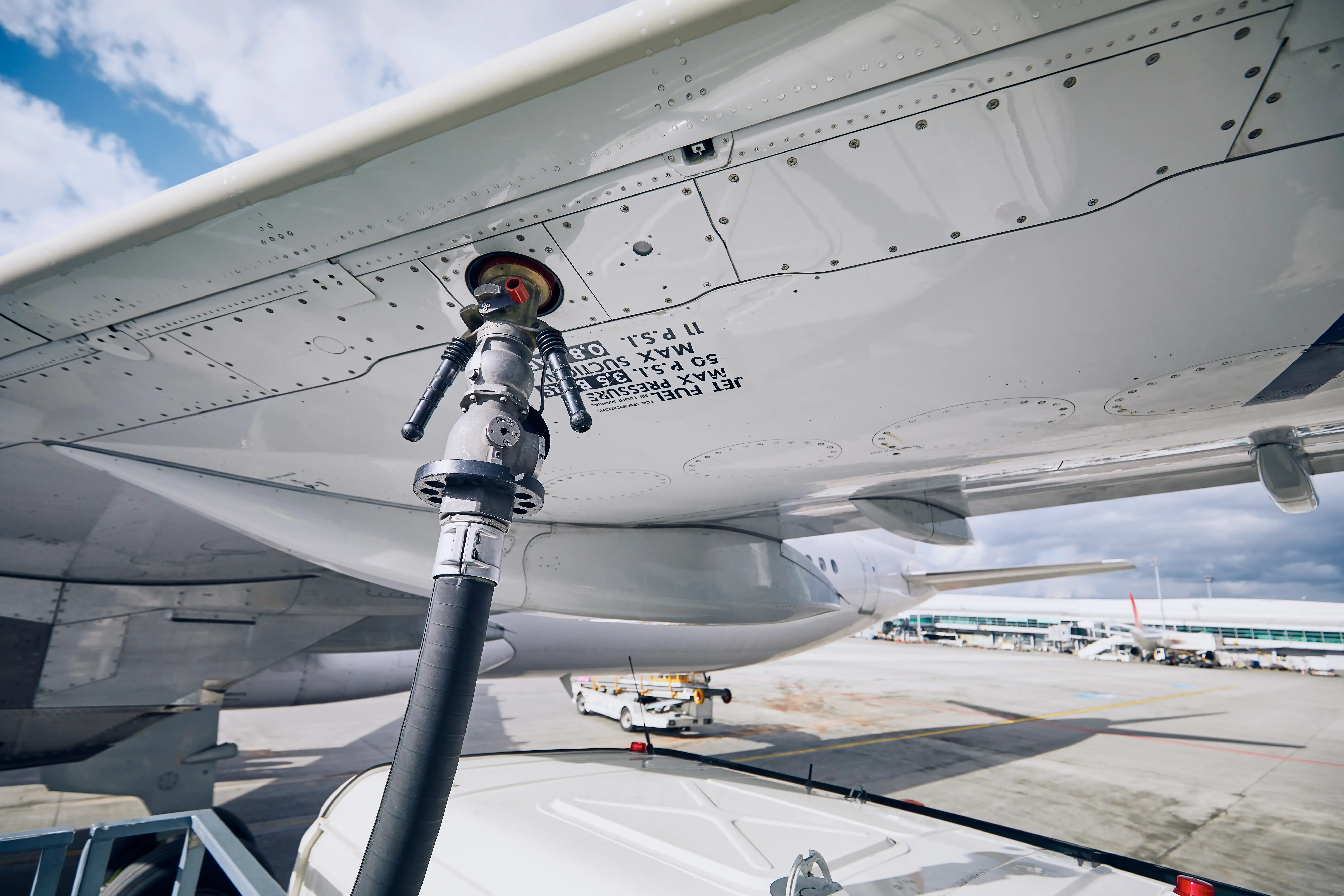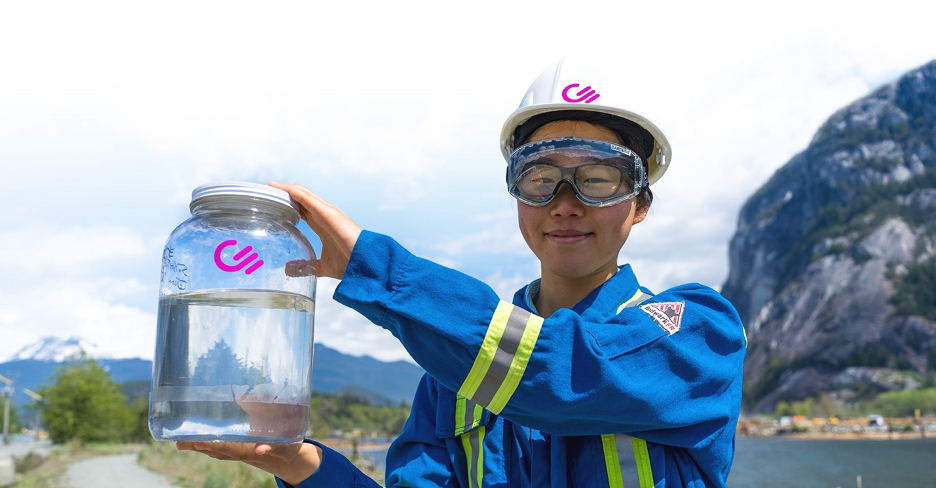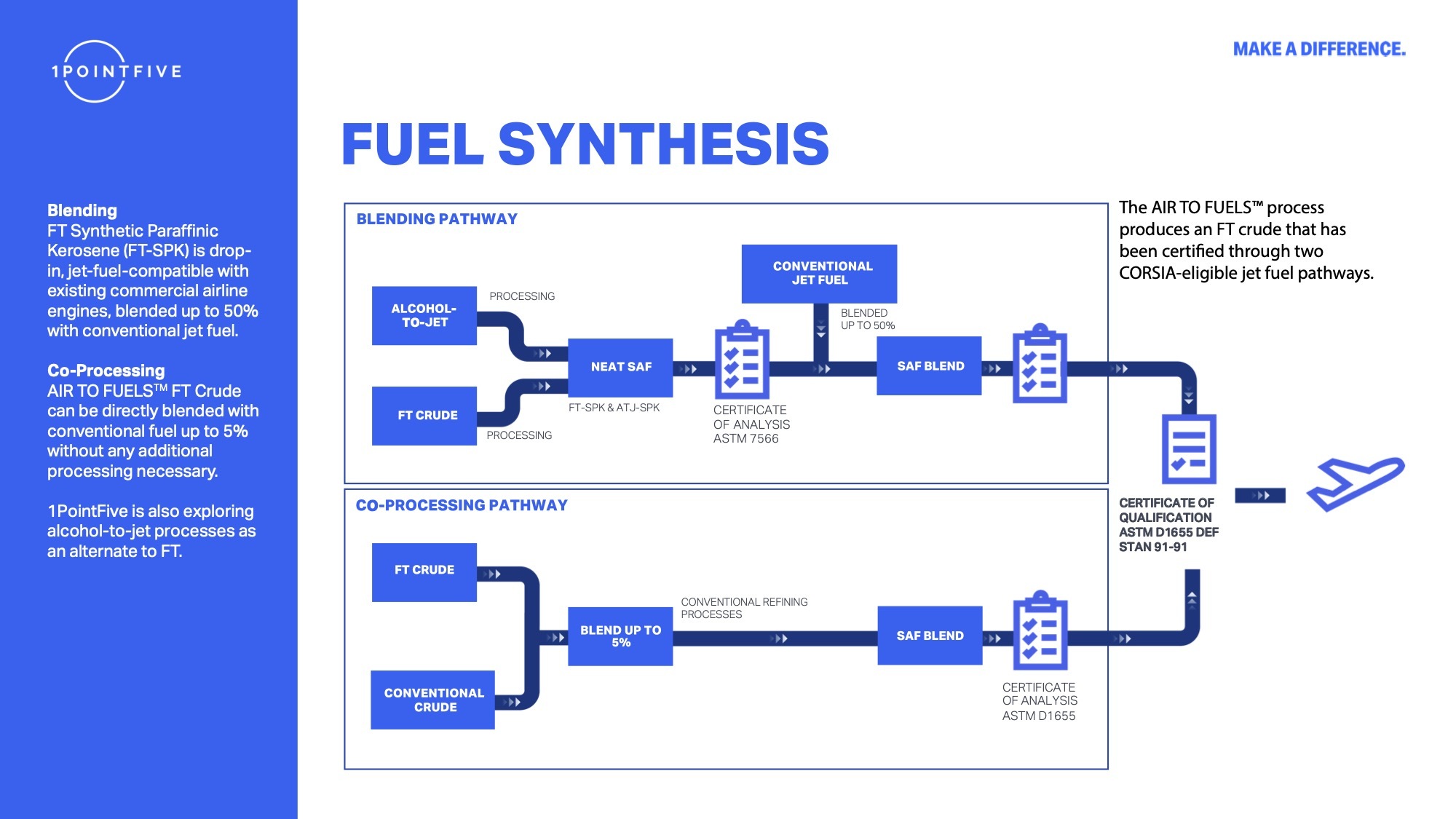Low-carbon fuels made from atmospheric CO2
1PointFive is working with Carbon Engineering to deploy AIR TO FUELS™ processes capable of turning atmospheric CO2 from Direct Air Capture (DAC) facilities into low-carbon fuels that are designed to be drop-in compatible with today’s infrastructure and vehicles.
AIR TO FUELS™ could serve as a mission-critical tool for difficult-to-decarbonize sectors such as aviation, maritime, rail and long-haul trucking as they pursue 2050 climate targets.

How it works
First, Direct Air Capture facilities will capture atmospheric CO2. The captured CO2 will then feed into a CO2 fuel synthesis process powered by clean energy. The resulting low-carbon fuels are designed to be drop-in ready, easily distributed and able to be produced at scale.


Multiple fuels minimal footprint
1PointFive is exploring numerous technologies, platforms and processes for the production of low-carbon jet fuel, diesel, liquefied natural gas and methanol using DAC-derived CO2. All with the aim of reducing the carbon intensity of commercial transportation fuels to help meet decarbonization goals and timelines.

Benefits of air to fuelsTM
High Emissions Reduction
AIR TO FUELS™ processes create fuels with an emissions reduction factor of up to 90 percent when compared to conventional diesel and jet fuels.
Low Carbon Intensity
Fuels produced from AIR TO FUELS™ processes deliver low carbon intensity ratings when measured against similarly scalable renewables.
Drop-In Compatible
AIR TO FUELS™ products are designed to be used with today’s refineries, infrastructure and vehicles, without the need to replace global transportation networks—an expensive and environmentally costly prospect.
Global Scalability
Because this production method uses atmospheric CO2 as a feedstock, these fuels can be produced in global scale quantities to help address the worldwide demand for lower-carbon fuels.
Clean Burning
Fuels produced from CO2 burn cleaner than fossil fuels, contain no sulfur and release low levels of particulates.
Resource Friendly
AIR TO FUELS™ facilities have operational land requirements more than a hundred times smaller than comparable biofuels facilities and use significantly less water.
Flexible Blending
AIR TO FUELS™ products can be blended with traditional fossil fuels to help fuel users achieve their decarbonization strategies, allowing gradual fuel switching that advances emissions reduction incrementally.
Hydrogen Supportive
Combining green hydrogen with atmospheric CO2 supports the production and expansion of climate-friendly hydrogen in today’s infrastructure environment.

First fuel produced in 2017
1PointFive technology partner Carbon Engineering produced its first atmospheric CO2-derived fuel at its pilot plant in 2017 using the Fischer Tropsch (FT) process. Today this proven approach has the potential to help traditionally tough-to-decarbonize industries such as the aviation sector reach their climate goals practically, sustainably and responsibly.

Fuel synthesis jet fuel pathways
AIR TO FUELS™ products can be synthesized into sustainable aviation fuel using one of two pathways: blending or co-processing. Download this reference chart on the steps involved in each of these production methods.
*AIR TO FUELS™ is a registered trademark of Carbon Engineering Ltd.

